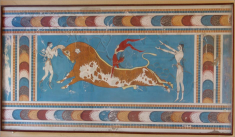Speaker
Description
The Archimedes experiment comes within the debate around one of the longstanding problems of fundamental physics: the incompatibility between General Relativity and Quantum Theory, and aims at measuring the interaction between vacuum fluctuations and gravity. Archimedes will measure the force exerted by the gravitational field on a Casimir cavity whose vacuum energy is modulated with a superconductive transition, by using a balance as a small force detector. If the vacuum energy does interact with gravity, a force directed upwards acts on the cavity and can be interpreted as the lack of weight of the expelled EM modes, in similarity with the Archimedes buoyancy of fluid. The expected torque generated with this modulation is of the order of $10^{-13}$ $Nm⁄\sqrt{Hz}$ . To detect such a small force, a very sensitive beam-balance has been suitably designed. A first prototype has been installed and tested in the SarGrav Laboratories at the Sos-Enattos site, in Sardinia (Italy) which is seismically very quiet. The tilt sensitivity of the prototype has been measured to be below $10^{-12}$ $rad⁄\sqrt{Hz}$ in the region between 1 and 10 Hz, which makes it the most sensitive tiltmeter in the world, of particular interest as auxiliary sensor for gravitational waves interferometers. In the region of tens of mHz, instead, at which the Archimedes modulation will take place, the torque sensitivity is around few times $10^{-12} Nm⁄\sqrt{Hz}$. Currently, the final setup has also been installed at the same site, the commissioning of the instrument has started, and the final measurement of the vacuum weight is expected to be performed in 2024.
Details
Annalisa Allocca, Università Federico II di Napoli and INFN sez. di Napoli - Italy
| Is this abstract from experiment? | Yes |
|---|---|
| Name of experiment and experimental site | Archimedes - Sar Grav laboratories - Sos Enattos mine, Lula (Nuoro) - Italy |
| Is the speaker for that presentation defined? | Yes |
| Internet talk | No |
